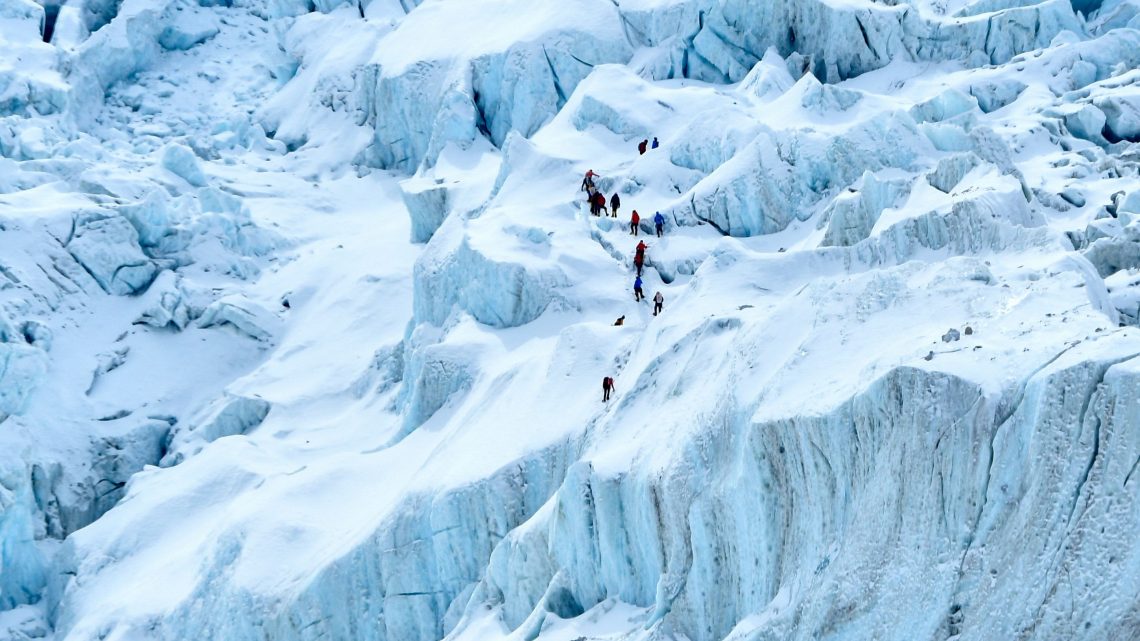
Nepal Wants Everest Climbers To Bring Their Oxygen Tanks Back for COVID Patients
May 11, 2021Nepal’s COVID-19 crisis is so bad that officials are now asking mountaineers who climb Mount Everest, the world’s tallest peak, to bring back their empty oxygen cylinders.
As multiple private and public hospitals run out of oxygen and hospital beds, even resulting in COVID-19 patients sleeping on floors or in corridors, the government says it urgently needs 25,000 cylinders.
And it has its eyes on the oxygen cylinders that climbers take to breathe on Everest.
“At the moment, we have 408 climbers at the Mount Everest base camp pushing to summit, and each person has about 4 cylinders, while their Sherpa climbing guides usually carry 3, and there are also solo travellers who carry their own cylinders,” Kul Bahadur, the General Secretary of the Nepal Mountaineering Association told VICE World News. “So roughly, we can expect about 2,500 cylinders to come back after this expedition.”
Over the weekend, Nepal reported a daily spike of 8,777 infections, which is 30 times more than the number recorded last month. And the government is trying to prepare. "We also need oxygen plants, compressors and ICU beds urgently," Samir Kumar Adhikari, a health ministry official told Reuters. Adhikari added that Nepal had requested China to supply about 20,000 oxygen cylinders.
So far this climbing season, which started in March, climbers and their Sherpa guides have used an estimated 3,500 oxygen cylinders to scale the summit. At Everest's peak, 29,029 feet up, each breath pulls in less than a third of the oxygen of a breath at sea level, so cylinders are essential to make the climb possible.
“Climbers generally need to use this oxygen when they reach 7,300 metres above sea level, and carrying these cylinders down is a difficult task.” Shiva Bahadur Sapkota, mountaineer and General Secretary of the Everest Summiteers Association told VICE World News.
Sapkota added that even though there is a rule that stipulates all objects carried by climbers to Everest have to be brought back, cylinders are often left buried under a thick layer of snow in cases of avalanche, accidents or frostbite. There have also previously been concerns over oxygen thefts and faulty cylinders that threatened the lives of mountaineers climbing Everest.
As the country recorded more than 394,667 COVID-19 cases, and 3,720 deaths related to the virus, according to government data, the Nepal Mountaineering Association, the country’s national association for mountain climbing, urged all climbers to help support the government as it deals with a stressed healthcare system and oxygen shortage.
Nepal currently only has about 1,600 intensive care units and less than 600 oxygen ventilators for its 30 million population. Only one doctor is available for every 140,000 people in the country, according to data from ActionAid Nepal.
Last year, Nepal faced $400 million in losses due to COVID-19, noted a study commissioned by the UN Development Programme. Expeditions to Everest contributed $300 million to Nepal’s economy in 2019, pushing authorities to reopen for mountaineers last September.
